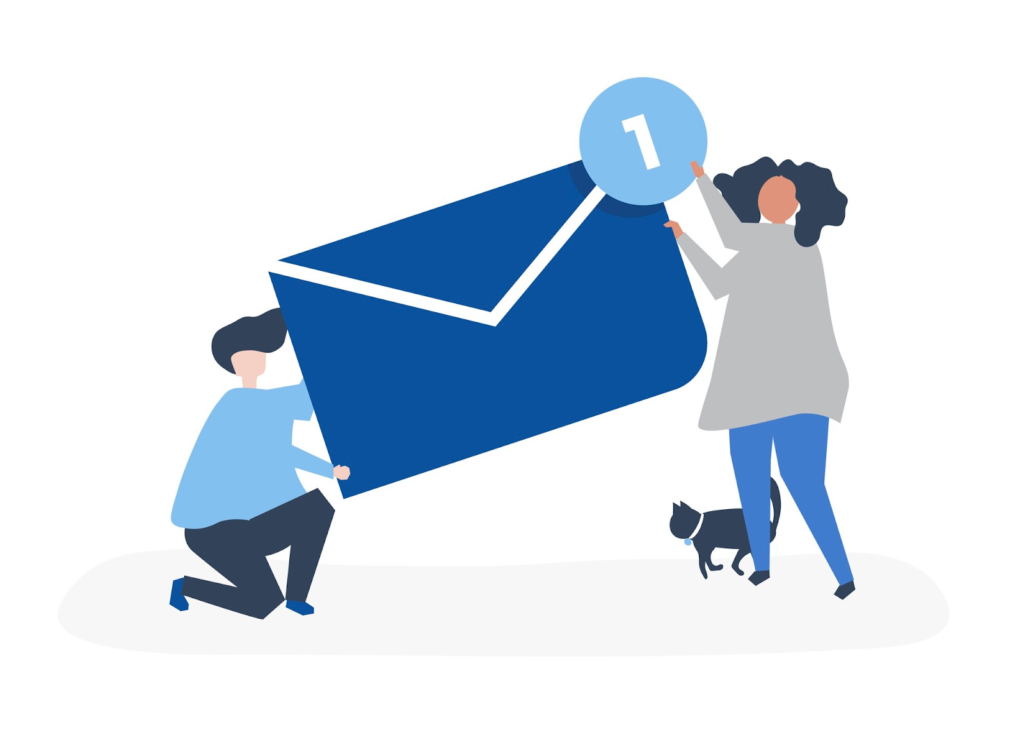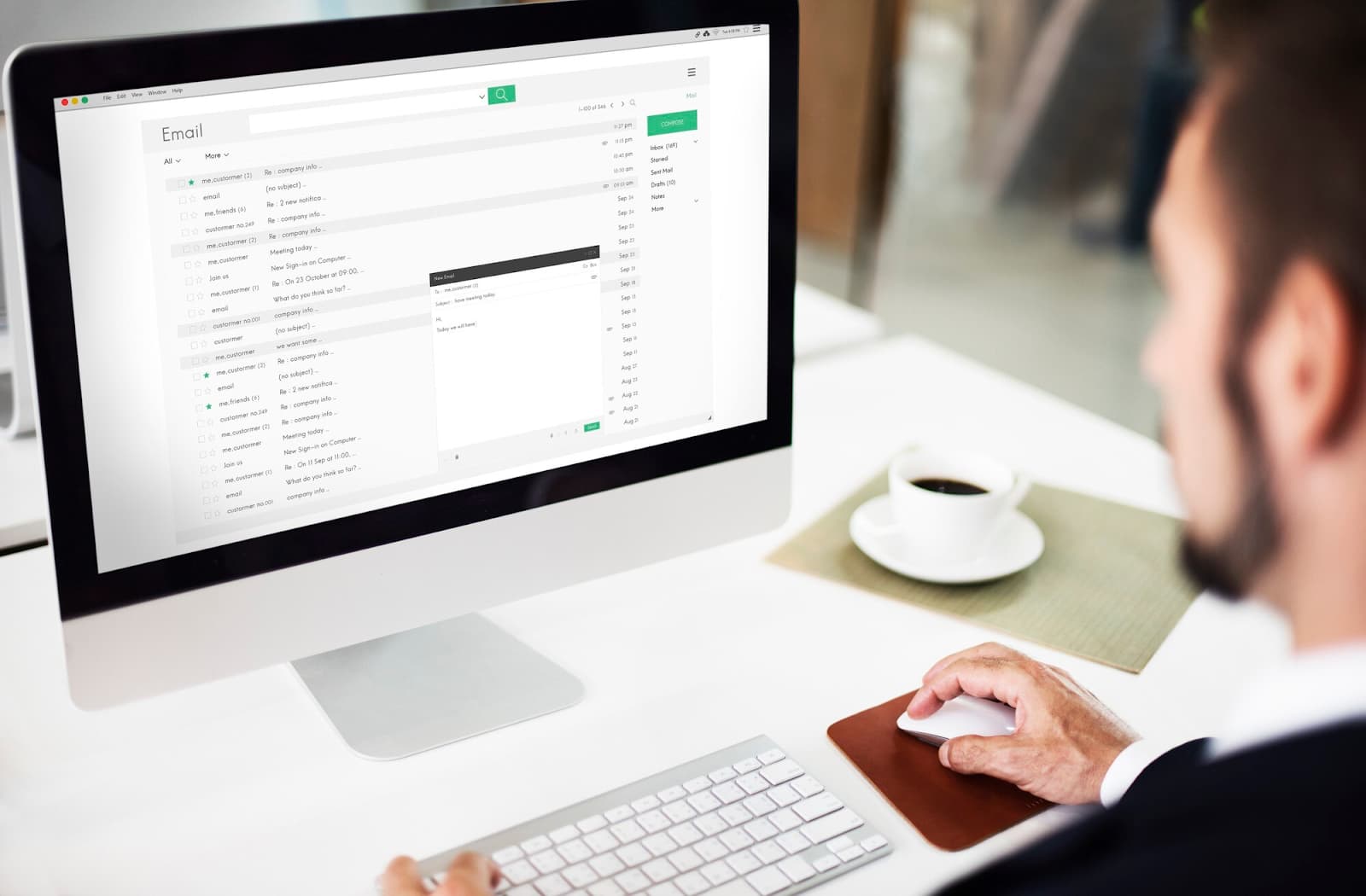Sending unsolicited communications, or ‘cold emails’, to potential employers can be a highly effective strategy to establish beneficial relationships and uncover hidden job prospects. The act of sending these cold emails to designated company representatives creates a dynamic impression of your proactive approach and demonstrates your readiness to take additional steps to accomplish your career objectives.
In this comprehensive guide, we will delve into what cold emails signify, provide advice on creating them, and elaborate on how to compose a cold email for a job that garners a positive reaction.
Decoding Cold Emails: Unraveling Their Potential
Cold emails are not just unsolicited messages; they’re strategic tools for outreach, often employed to establish new business or networking pathways. Although commonly associated with sales, their application extends far beyond. Here are some instances where crafting a cold email could be immensely beneficial:
- Initiating contact with your dream company;
- Tapping into your existing network to connect with new professionals;
- Expanding your professional circle;
- Arranging informational interviews;
- Contacting individuals without any known connections;
- Sending words of thanks post an interview;
- Following up on previous cold emails that remain unanswered;
- Alerting recruiters about your submitted application.
Unleashing the Power of Cold Emails: The Benefits
In the era of digital communication, cold emailing emerges as a potent strategy to connect with potential employers and secure job opportunities. Here’s what makes cold emails an exceptional tool in your job-search arsenal:
- Direct to their inbox: Emails are checked multiple times a day by most professionals, making it a reliable medium for ensuring your message gets seen, as opposed to voicemails that might go unheard;
- Persistent yet polite: Cold emails allow you to follow-up on your initial correspondence without being intrusive. However, it’s crucial not to be overly aggressive in your follow-ups;
- Non-invasive: A significant advantage of cold emails is their non-intrusive nature, allowing the recipient to respond at their own pace and convenience;
- Convenient to respond: A well-crafted cold email makes it quick and easy for the recipient to reply, thereby facilitating seamless communication.
A Comprehensive Guide to Crafting a Job-oriented Cold Email
Navigating the terrain of job hunting can often lead career seekers to the doorstep of unchartered territories. One such advanced strategy to secure beneficial connections and potentially unlock hidden job opportunities is cold emailing. So, how to write a compelling cold email that gets noticed amidst the inbox clutter? Let’s unravel the process step-by-step.
Unearth the Ideal Point of Contact
The very first step in your cold emailing journey is to zero in on the appropriate person to reach out to within the organization. Gauging who holds the reins of decision-making in the area you are interested in is vital. Extensive research is crucial at this stage. Scrutinize the company’s official website and their profiles on professional networking platforms. Often, senior employees and decision-makers are listed on these platforms, and their contact details may be available for your perusal.
Define Your Purpose Clearly
Unclear intent can lead your email straight into the recipient’s trash bin. Be explicit about your purpose right from the start. Make sure to introduce yourself, specify your current professional affiliation, and clarify how you obtained their contact details. Demonstrating your interest in the company and its operations will likely engage the recipient and prompt them to read your email in its entirety.
Initiate With a Modest Request
When it comes to cold emailing, patience and tact are fundamental. Rather than bombarding the recipient with immediate job requests, start off by seeking information about potential vacancies or propose an informal meeting to discuss opportunities. This non-aggressive approach is more likely to facilitate a relationship-building process.
Inject Personal Touches
Nothing grabs attention quite like a personalized message. Use the recipient’s name and refer to any of their accomplishments or work that you sincerely appreciate. This not only showcases your initiative to research but also makes clear your genuine interest in them and their organization.
Ensure Timely Follow-ups
If your initial email goes unanswered for around a week, it’s acceptable to drop a respectful follow-up message. Keep in mind that your recipient is likely swamped with numerous emails daily, so a gentle reminder could bring your message to their attention.
Mastering Your Outreach: An In-depth Guide on Cold Emailing for Job Opportunities
Venturing into the world of cold emailing can seem daunting initially, but with the right tools and tricks up your sleeve, you can transform this process into an efficient pathway leading to exciting career opportunities. The following section provides an enriched insight into the art of cold emailing for job inquiries, with specially tailored tips to help you put your best foot forward.
Timing is Crucial
The time you choose to send your email can greatly influence its visibility in the recipient’s inbox. Stay clear of the early wee hours or late nights; this may give your email an unprofessional impression. The ideal time to dispatch your cold email is during standard working hours, ideally mid-morning on a weekday when the email traffic is less congested and your message stands a better chance of catching the recipient’s eye.
Aim for Brevity and Clarity
Time is of paramount importance to professionals. Respect your recipient’s time by ensuring your email is concise, yet covers all necessary aspects. Craft your message in a manner that conveys your intentions clearly, and does so in a quick read.
Spell Check and Grammar Matter
Your cold email represents your professional skills, including written communication. Ensure your email is devoid of grammatical errors or spelling mistakes. A well-structured, grammatically correct email with appropriate punctuation reflects your meticulousness and commitment to quality in your work.
Establish a Connection
While composing your email, highlight any shared interests or any aspect of the recipient’s work that you admire. This not only personalizes your message but also establishes a potential connection with the recipient, increasing your chances of receiving a response.
Draw Attention with Your Subject Line
Your subject line is the first pointer the recipient has towards your email’s content. Therefore, it’s crucial to make it interesting and informative enough to prompt the reader to open the email. Steer clear of vague subject lines and instead, opt for concise ones that reveal the purpose of the email.
Provide Your Schedule
If your email’s intent is to arrange a meeting with the recipient, consider including your availability to afford them the convenience of selecting a suitable date and time. This displays your flexibility and increases the likelihood of securing a meeting.
Cold email inquiry template
Below is a template that may help you to create your own cold email inquiry:
Dear [NAME],
My name is [YOUR NAME] and I found your information on [HOW YOU FOUND THE INFORMATION]. I am currently seeking a new opportunity to sharpen my skills and gain experience in [SKILL] and [SKILL]. As of right now, I work for [COMPANY NAME] as a [POSITION], however, I am interested in applying for the open position of [POSITION] at your company. I think I could offer this organization [VALUE].
I’d love the opportunity to discuss the opportunity over [PHONE, COFFEE, EMAIL, ETC.]. I am available [YOUR AVAILABILITY].
Please let me know if you are available to discuss this position further. I am willing to work around your schedule.
Thank you for your consideration.
Sincerely,
[YOUR NAME]

Cold email examples
Here are a few situational examples in which a cold email could be sent to help you when you are writing your own cold email:
Example #1: When you need to email someone you don’t know
Dear Mr. Robertson,
My name is David Peterson and I am interested in finding out more about the senior marketing executive position listed on your company website. Your assistant provided me with this email so I could get in touch with you.
I noticed that your company won the Best Marketing Agency award for three years in a row and your name was mentioned in an article regarding your commitment to empathetic leadership. I would love to meet with you because of our shared interest in leading teams to success with the utmost emotional intelligence.
I’d love to schedule a time to discuss my suitability for the senior marketing executive position within the next couple of weeks. I am willing to adapt to your availability, of course. I will follow up with you next week if I haven’t received a reply from you before then.
Sincerely,
David Peterson
Example #2: When you want an informational interview
Dear Candace Barnaby,
My name is Elizabeth York. I’m a 2017 graduate from New Town University. I came across your name on the alumni website and I followed the links to your published research. I especially enjoyed the article regarding the way our body metabolizes medications.
If possible, I’d be very interested in meeting for 20-30 minutes over coffee to discuss your career and whether there may be any upcoming opportunities with your company. I currently work for Hope Teaches Research Hospital, but many individuals in my network work in the pharmaceutical research industry. These colleagues have told me how they have made a difference and I hope to do the same in the research assistant position available at your company.
Would it be possible for us to meet soon? I have a flexible schedule and can meet at a date and time that is convenient for you.
I look forward to your response.
Sincerely,
Elizabeth York
Example #3: When you let a recruiter know you applied
Dear Steven Wei,
I applied for an open position at Blue Mist Company for the position of software engineer on your online career site. I believe the position fits incredibly well with my 15 years of experience in database management and software engineering. If you are interested in learning more about me please check my business social media page [PROFILE LINK].
I recently followed you on the same business social media page and I appreciate the interesting articles you provide for job seekers and how you interact with candidates. We also have a common interest regarding AI.
I’d love to schedule a call and talk with you further about the position and my experience. I have some availability on Monday, Wednesday and Thursday both next week and the following week from 12 p.m. to 4 p.m. EST. You can email me at [email protected] or by phone at 555.555.5555. I look forward to speaking with you.
Sincerely,
Josh Numan
Conclusion
Cold emailing is a potent tool in your job-seeking arsenal, offering you the chance to establish invaluable connections and unlock new professional opportunities. By identifying the appropriate point of contact, personalizing your message, maintaining a polite tone, and following up respectfully, you can significantly increase your odds of securing a positive response. Ready to take your job search to the next level? Craft your first cold email today and embark on a proactive approach to landing your dream job.


Leave a Reply